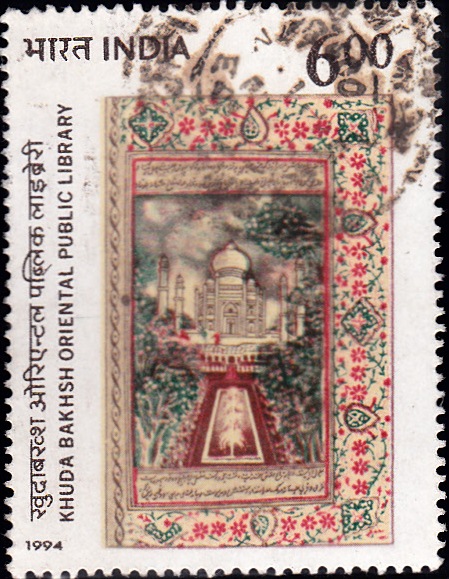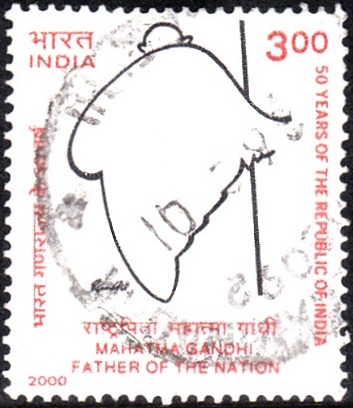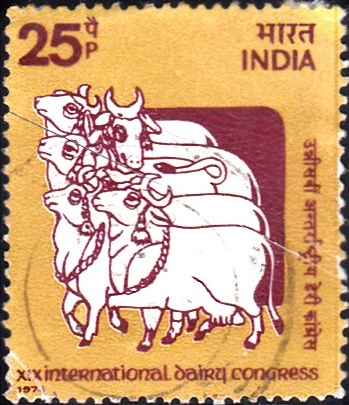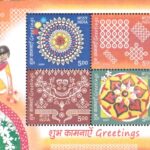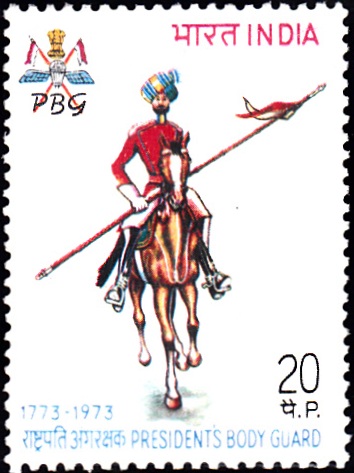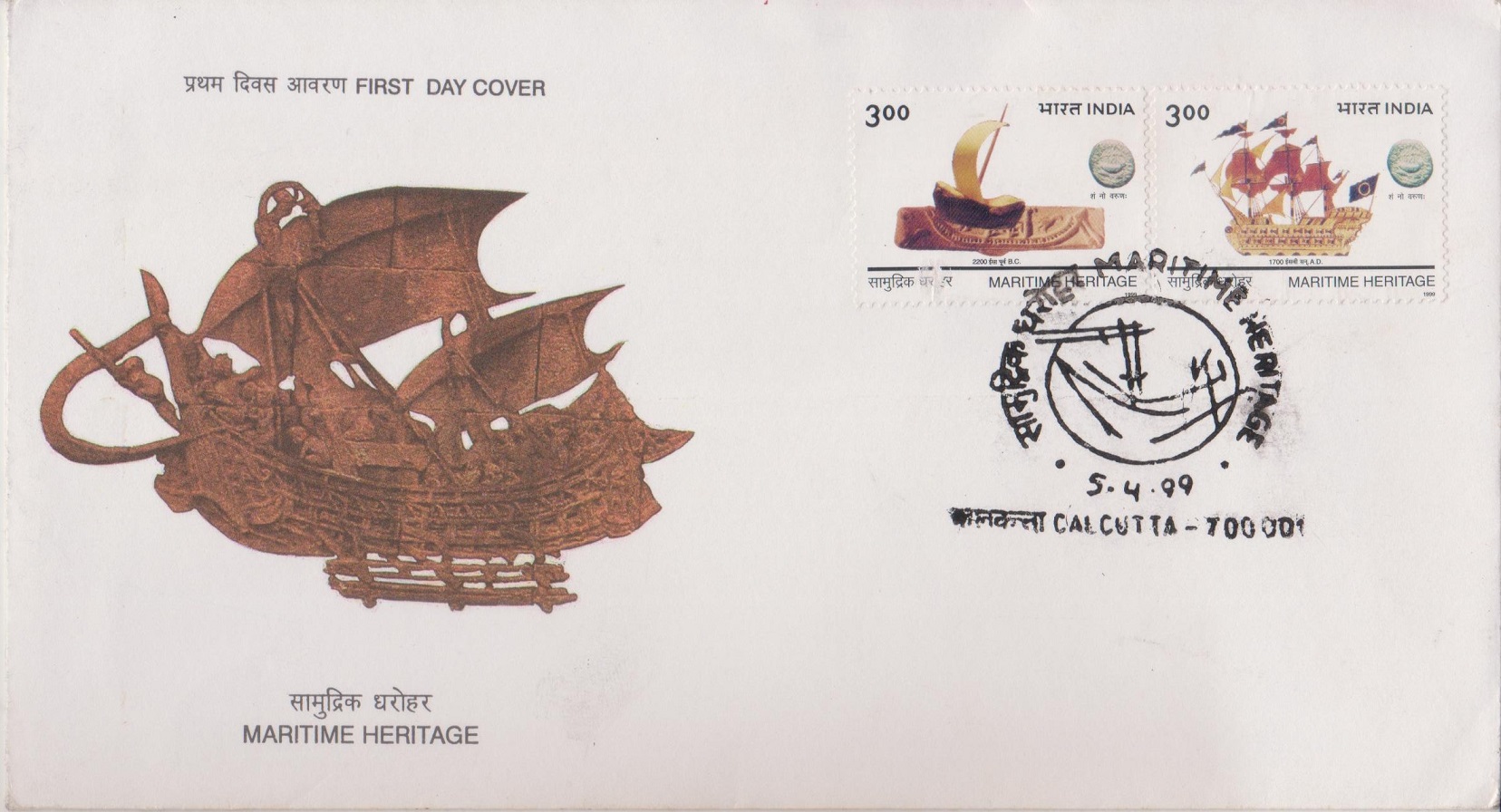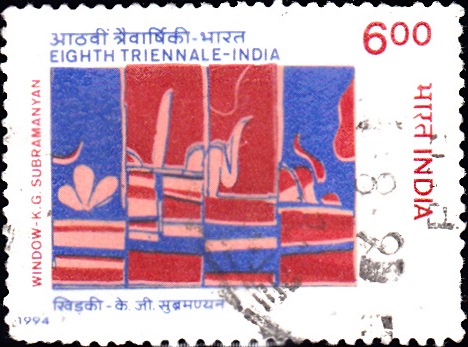
Eighth Triennale – India
A commemorative postage stamp on the 8th Triennale – New Delhi, India :
 Issued by India
Issued by India
Issued on Mar 14, 1994
Issued for : The Department of Posts had the privilege of issuing commemorative postage stamps on the occasion of the I Triennale–India in 1968, then for the VI Triennale held in 1986 and again the VII Triennale held in 1991. The special commemorative stamp being issued by 1994 to mark the VIII Triennale-India, carries the graphic painting entitled “Window” by Prof. K.G. Subramanyan, which was an award-winning entry in the 1st Triennale-India in 1968. The Department of Posts is happy to mark the VIII Triennale-India 1994, with this issue.
Credits :
Stamp Design : Prof.K.G. Subramanyan
First Day Cover : Lalit Kala Akademi, New Delhi
Cancellation : Smt. Alka Sharma, Artist, Dept. of Posts.
Type : Stamp, Postal Used
Colour : Multi Colour
Denomination : 600 Paise
Overall size : 3.91 x 2.90 cms.
Printing size : 3.55 x 2.54 cms.
Perforation : 13 x 13
Paper : Imported Un W/M Adhesive Gr Coated Stamp Paper in Sheet 50.8 x 53.5 cm.
Number of stamps Printed : One Million
Number per issue sheet : 35
Printing Process : Photogravure
Printer : India Security Press
About :
- Art, as a medium of self-expression, has always been the most universal of all languages. Triennale-India is an international exposition of world art attempting to provide a forum to the creative artists of the world to get together under one banner and share their creative endeavour and ideas. Collections of contemporary arts from different parts of the world had been received periodically. But it was not till 1968 that an organised venue was provided for an international art exhibition here in India, which resulted in the First Triennale-India held in New Delhi in 1968.
- Ever since the dawn of civilisation, pluralism has remained an essential attribute of Indian culture and art. Different cross-currents from the regions around kept flowing and merging into the main cultural stream of the land, over the millennium in the past. In fact such interaction between the cultural trends has often been a universal phenomenon. During the long history of our civilisation punctuated with different political and socio-economic systems, the Indian artist, almost without interruption, continued to enjoy freedom in his creative endeavour, drawing inspiration from the rich tradition on the one hand, and from the new socio-cultural waves of the modern era on the other. The realisation of the concept of a global community today has not, however, weakened the artist’s right to creative freedom. It has truly strengthened the urge for creations that carry an imprint of the individual.
- The VIII Triennale–India 1994, held in New Delhi once again brought together exquisite creations from different countries. International seminars and camps have added variety for the international participants. The works of art displayed included paintings, sculptures and graphics from India and other countries. Enthusiasm generated by this exposition with its manifold activities would help in sharpening the capabilities of both the connoisseur and the novice for savouring the delicate qualities of such works of art. The awards instituted for the displays will also be a fillip for the artists themselves.
- Text Source : Lalit Kala Akademi, New Delhi.


